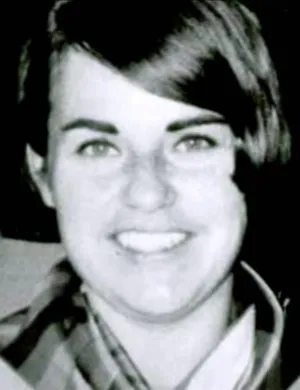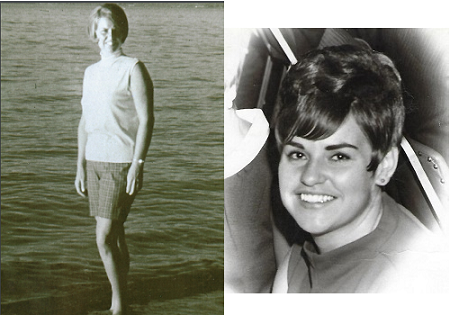Skull found in 1986 identified as missing casino nurse, authorities say
Human remains found decades ago near Lake Tahoe, California, have been identified as a woman who went missing in the early 1970s, authorities said.
Donna Lass was 25 years old when she disappeared from the South Lake Tahoe area in September 1970, the South Lake Tahoe Police Department said in a news release Wednesday. At the time, investigators had exhausted all leads surrounding the disappearance of Lass and the case remained unsolved
The Placer County Sheriff’s Office said that in 1986, authorities discovered a skull off of Highway 20 and Interstate 80 near Lake Tahoe. No additional evidence was found at the time. The Placer County Coroner’s Office preserved the skull for decades.
Then a cold case team recently established to investigate unsolved missing persons and suspicious death cases sent the skull to for DNA testing. A match was made last week.
"The California Department of Justice Bureau of Forensic Services was able to match the DNA of the skull with the DNA from a member of Donna Lass’s family which was obtained by South Lake Tahoe Police Department for their missing persons case," the Placer County Sheriff’s Office said in a statement Wednesday. "This allowed them to identify the skull as the remains of Donna Lass."

Authorities said Lass' surviving family members were notified of the DNA match and investigators are continuing efforts to reexamine the case.
"We are extremely grateful that this team effort was able to bring closure to the Lass family and are hopeful that cold case detectives can continue to make advances in these cases," the sheriff’s office said.
Decadeslong cold case:1979 Las Vegas cold case identified as 19-year-old Cincinnati woman Gwenn Marie Story
Donna Lass last seen walking with young, blonde man
Lass was a nurse at a casino in Stateline, Nevada, which is just northeast of South Lake Tahoe, when she vanished, according to a 1970s newspaper clipping shared by the sheriff’s office.
She was last seen on Sept. 7, 1970, walking with a young, blonde man near her apartment she had rented the day before, the newspaper reported. Lass left behind her new car, a large wardrobe and a bank account.
Amateur sleuths have long speculated that Lass may have been a victim of the Zodiac Killer — a famed serial murderer who committed his crimes in Northern California in the late 1960s. The Zodiac Killer is well-known for the cryptic messages he sent to the news media, taunting law enforcement and reporters with ciphers and graphic descriptions of his crimes.

The Tahoe Daily Tribune reported that Lass was a suspected victim because a postcard was sent to authorities and a Christmas card was sent to Lass’ sister after she disappeared.
But the Placer County Sheriff’s Office told The Sacramento Bee that authorities have not linked Lass' death to the Zodiac Killer, who also has not been identified or apprehended for at least five murders connected to him.
'I was shocked':Cold case now a murder investigation after body found in Texas lake 37 years ago identified
Use of DNA technology
Investigative genetic genealogy has been a key technique in several high-profile criminal cases where genetic information has been used to identify and find connections between suspects and victims.
The practice allows law enforcement to enter DNA samples into a national database to find a match. One of the most famous cases cracked by the DNA profiling technique was that of the Golden State Killer, who was identified in 2018.
"As technology develops, investigators routinely revisit cases which were previously believed to have no leads," South Lake Tahoe Police said Wednesday.
But the technique has also received widespread scrutiny and raised concerns about people's privacy. Experts have said technological improvements have made it easier to develop DNA profiles from smaller amounts of biological evidence, such as skin cells left on a gun or piece of clothing.
Despite there being safeguards in place for criminal databases, critics have noted, direct-to-consumer companies may not have the same restrictions on user data — which can have huge implications for privacy.
Still, DNA has been used as key evidence in recent years, including in the case of the Long Island Gilgo Beach murders, where an architect was charged after detectives matched DNA from discarded pizza he ate to a male hair found on the one of the women's remains.
Contributing: N'dea Yancey-Bragg, Kayla Jimenez and Anna Kaufman, USA TODAY

Disclaimer: The copyright of this article belongs to the original author. Reposting this article is solely for the purpose of information dissemination and does not constitute any investment advice. If there is any infringement, please contact us immediately. We will make corrections or deletions as necessary. Thank you.





